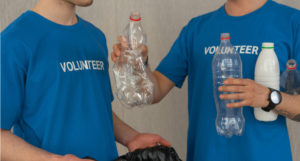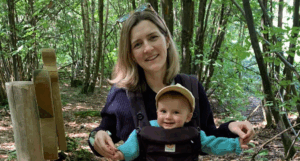Being sedentary as a child significantly increases risk of premature vascular damage
Childhood sedentariness has been identified as a cause of premature vascular damage, but engaging in light physical activity could reduce the risk.
The research was conducted the University of Exeter in collaboration with Oxford University, the University of Bristol, and the University of Eastern Finland, and the results were published in Acta Physiologica.
It is now known that approximately six hours a day is spent sedentary in childhood, which increases to at least nine hours a day by young adulthood. This cumulative increase in time spent sedentary in childhood has been linked with increased fat obesity, dyslipidaemia, inflammation, and an enlarged heart.
Arterial stiffness has been identified as a causal factor for childhood and adolescent obesity, insulin resistance, hypertension, metabolic syndrome, and premature heart damage. Adult studies suggest that arterial stiffness increases the risk of premature death by 47 percent. Therefore, preventing arterial stiffness in childhood is of public health and clinical significance.
Professor Andrew Agbaje of the Children’s Health and Exercise Research Centre at the University of Exeter said: “This study provides novel information that would be useful in updating future health guidelines and policy statements. Our recent studies appear to emphasise that childhood sedentariness is more dangerous to health than previously thought. Sedentariness is the root cause of several disease risk factors such as fat obesity, high lipid levels, inflammation, and arterial stiffness.”
The current study is the largest and the longest follow-up accelerometer-measured movement behaviour and arterial stiffness study in the world and uses the University of Bristol’s Children of the 90s data (also known as the Avon Longitudinal Study of Parents and Children). The study included 1339 children (56 percent females) aged 11 years old, who were followed up until the age of 24. The children wore accelerometer devices on their waist at ages 11, 15, and 24 years for four to seven days and had arterial stiffness measurements at ages 17 and 24. The children also had their fasting blood samples repeatedly measured for glucose, insulin, high-density lipoprotein cholesterol, low-density lipoprotein cholesterol, triglyceride, and high-sensitivity C-reactive protein. In addition, blood pressure, heart rate, smoking status, socio-economic status, and family history of cardiovascular disease were measured and controlled for in the analyses.
During the 13-year follow-up, persistent sedentary time from childhood of less than six hours a day accelerated the velocity of arterial stiffness by 10 percent and one in a thousand adolescents might have experienced severe vascular damage. On the other hand, engaging in light physical activity for at least three hours a day reversed arterial stiffness and vascular damage. Surprisingly, spending time in moderate-to-vigorous physical activity (MVPA) did not reduce arterial stiffness because MVPA increases muscle mass in the body and the blood vessels. This resulted in a paradoxical relationship where MVPA slightly increased arterial stiffness in a physiologic phenomenon called vascular wall remodelling. The MVPA-induced increase in arterial stiffness is at least three times less than sedentary time-induced arterial stiffness.
Professor Andrew Agbaje from the University of Exeter said: “Our research suggests the key to combating this sedentariness is three to four hours a day of light physical activity. Unfortunately, the World Health Organization’s latest guideline lacks information on light physical activity and we urge them to address that. But in the meantime, public health experts, health policymakers, health journalists and bloggers, paediatricians, and parents should encourage children to participate in light physical activity.”
The paper entitled ‘Accelerometer-based sedentary time, light physical activity, and moderate-to-vigorous physical activity from childhood with arterial stiffness and carotid IMT progression: A 13-year longitudinal study of 1339 children’ was published in Acta Physiologica.
Professor Agbaje’s research group (urFIT-child) is supported by research grants from Jenny and Antti Wihuri Foundation, the Finnish Cultural Foundation Central Fund, the Finnish Cultural Foundation North Savo Regional Fund, the Orion Research Foundation, the Aarne Koskelo Foundation, the Antti and Tyyne Soininen Foundation, the Paulo Foundation, the Yrjö Jahnsson Foundation, the Paavo Nurmi Foundation, the Finnish Foundation for Cardiovascular Research, Ida Montin Foundation, Eino Räsänen Fund, Matti and Vappu Maukonen Fund, Foundation for Pediatric Research, and Alfred Kordelin Foundation.




